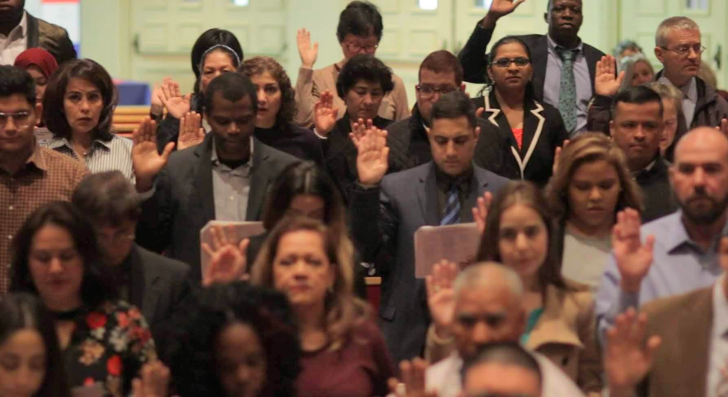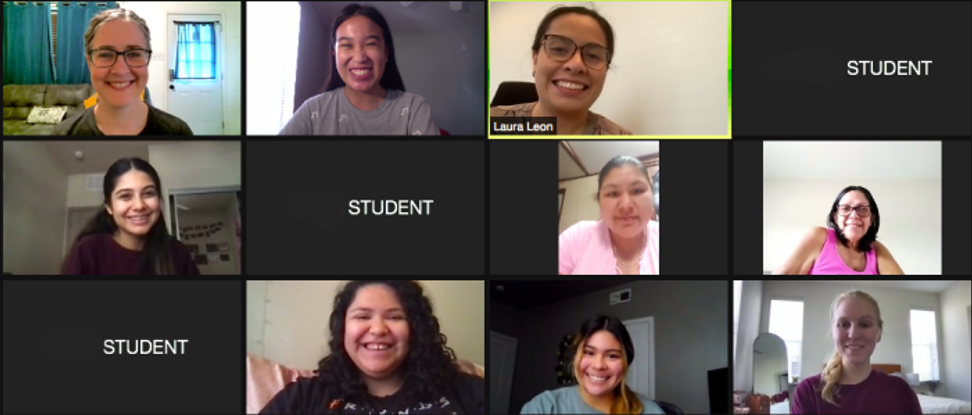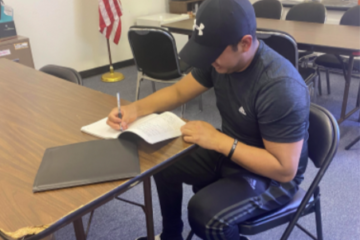Immigrant Stories: Maria Ruiz

On November 16, 2021 Maria Ruiz successfully completed the most daunting and difficult part of the American citizenship process: the USCIS naturalization test. Fresh from passing her naturalization test, Maria was eager to describe the process of her interview, when she met via Zoom to talk with Isabella Embile, one of BIIN’s fall 2021 interns with the citizenship classes.
First, Maria had to drive to the USCIS Field Office in San Antonio to take her exam. With the spread of COVID-19, the exam process has changed slightly: instead of meeting in person, Maria’s exam proctor would be talking to her via a computer screen. Maria was required to show her driver’s license and green card, before responding to exam questions about U.S. history. In order to pass the exam, an applicant must answer 6 out of 10 questions correctly. After the 6th question, Maria was able to move on to the next section, as she had correctly answered the questions so far. Maria then breezed through the writing section. Finally, the exam proctor went over Maria’s N-400 (application form) with her. All in all, the exam lasted around 30 minutes, and Maria was especially relieved to see that the proctor could easily understand her. Maria was quick to admit that she felt very nervous before the interview began, but said she began to feel more confident as the exam went on. Despite her nervousness, Maria proudly affirmed that for her, the exam was “too easy.”
Before moving to the United States, Maria lived for many years in San Juárez, Chihuahua, México, where she worked as a daycare provider and medical assistant. San Juárez was very violent; Maria recalled, for example, how her car had been shot at three times when she lived there. To escape the violence, Maria moved first to Guadalajara, Mexico and then to the United States. Since 2013, Maria has lived with her daughter and son-in-law in Tomball, Texas. She dotes on her three grandchildren: 15-year-old twins and the baby, now 3 years old. Maria enjoys living in Texas because it is safer, less violent, and feels much less stressful than her previous hometown. Maria is also deeply grateful to live with her family in the United States. When asked what she is most looking forward to being able to do, as an American citizen, Maria answered that she appreciates the security of living in America with her family as well as the ability to travel freely back to Mexico.
As a participant in BIIN’s English Citizenship classes for the past few months, Maria attributes much of her success to the program. She felt that the classes “helped [her] a lot” as she was able to hear the exam questions out loud and get used to the pronunciation of certain English words. For Maria, it was also useful to practice answering the questions in English with volunteers, as this mirrored the verbal aspect of the naturalization interview. In addition, Maria believes that she benefited from the organized structure of the classes: each week, the teacher would review the previous week’s exam questions, present new material with a Powerpoint, and use Zoom’s break-out rooms to enable students and volunteers to have one-on-one time to review and practice answering the current week’s exam questions. Through clear presentation and practice, the classes enabled Maria to understand and memorize answers to the questions she could anticipate on the naturalization exam.

As Maria lives outside of Brazos County, she also found it very convenient that the citizenship classes met online. Meeting via Zoom for the weekly lessons has enabled everyone to stay safe in the pandemic and to continue learning from home. With respect to the online format, Maria wanted to share a funny anecdote about using her grandson’s Zoom account. Because her camera was off and her grandson’s name “Fernando” was automatically listed as her name on Zoom, the BIIN teachers and volunteers assumed that her name was Fernando. The first week, when everyone moved to break-out rooms, Maria wondered why people kept calling her “Fernando.” Eventually, when the volunteers realized that “Fernando” was indeed “Maria,” they showed her how to change her name on Zoom, and everyone began to address her appropriately. While the slight technological hiccup is funny to look back on, it’s important to recognize that online classes have continued to connect and support students from across the United States, Zoom mishaps and all.
It’s easy to see the hard work and dedication that Maria put into preparing for her exam when she discusses her studying methods and tips. Outside of classes, Maria went over the exam questions while doing chores like washing the dishes or cooking meals. She also reviewed the material extensively throughout the week and practiced her answers for the exam with her children. Her recommendation for aspiring citizens who are nervous about taking the USCIS exam would be to attend BIIN’s classes if they can and to constantly practice answering the exam questions.
When we last spoke, Maria was still awaiting notice of the date of her naturalization ceremony. In the meantime, Maria’s story may serve as an inspiration for other immigrants and aspiring U.S. citizens: it’s a reminder that the path to immigration may be complex and complicated, but it’s never impossible. While Maria was anxious at the beginning of her exam, her success proves that preparation is pivotal. BIIN is proud to have played a role in Maria’s preparation for becoming a citizen of the United States, and we are delighted for her and her family, as they celebrate this milestone.
Thanks to Isabella Embile for writing this profile and for working with BIIN’s citizenship classes and Grant Committee in fall 2021.



